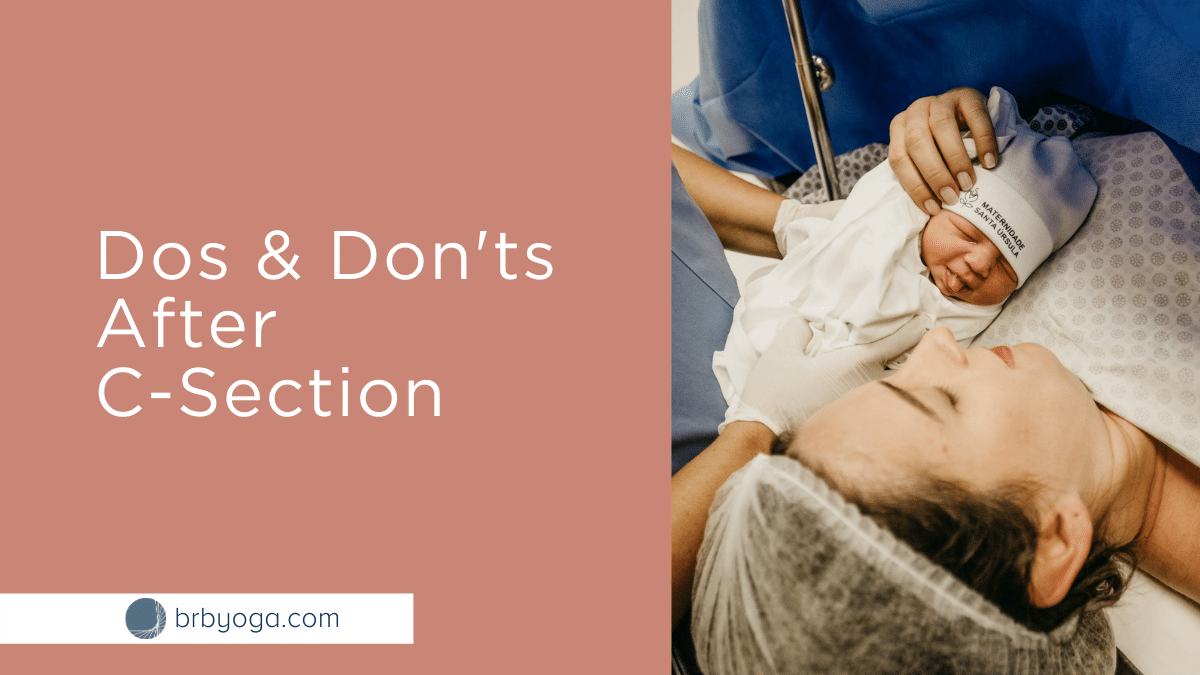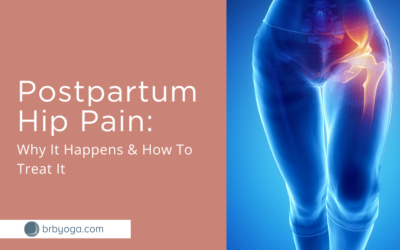Childbirth is extraordinary; you finally get to meet the baby who has been growing inside you. At the same time, birthing a child also brings significant changes to your body—especially for mothers who give birth by C-section.
After a cesarean section, you’ll need more time to recover than after vaginal birth. Understandably, you want to return to your pre-birth routine as quickly as possible, but it’s important to take things slowly so your body can recover.
After a c-section, your body has unique needs. We’re sharing a list of the dos and don’ts after C-section birth that can help your body heal well.
Check out our guide below on what you should and shouldn’t do after a C-section. We’ll talk in detail about:
Dos:
- Prioritize rest.
- Walk.
- Support your core with a postpartum girdle.
- Stay hydrated.
- Care for your C-section scar with massage.
- Re-establish deep breathing
- Ease slowly into exercise at 6–8 weeks.
Don’ts:
- Don’t do too much too soon.
- Don’t drive for a few weeks weeks.
- Avoid sleeping on your stomach.
- Avoid having sexual intercourse.
- Don’t go at it alone and ask for help if you need it.
All About C-Sections
Whether planned, or unexpected, c-section births are a possibility for every expectant mother. Even if you are planning a vaginal birth, it makes sense to have basic knowledge of the procedure.
A C-section is major abdominal surgery and is associated with more risks than natural birth. Because it is a surgical incision into the abdomen and uterus, there’s a greater possibility of infection, blood loss, blood clots, more intense postpartum pain, etc.
C-Section Recovery
You’ll probably spend several days in the hospital after the birth. Even if you’re in pain, it’s important to try to walk within 24 hours. This can prevent the development of blood clots, help ease gas pain, and help you with bowel movement.
Your wound will feel painful and sore for a few weeks, and you may want pain relief medications for a few weeks. This period varies, as not every woman’s body is the same; some heal faster and feel less pain than others.
This video shares some simple movements you can do while recovering in the hospital.
What Can You Expect in the Days After a C-section?
- Pain: You’ll feel pain around the incision area and with postpartum uterine cramping. You can ask your doctor for pain medication to help reduce the pain.
- Vaginal bleeding: You’ll most likely have vaginal bleeding for several weeks. Again, this is completely normal, as your body is getting rid of the extra tissue and blood from your uterus. It is possible you will experience less bleeding after a cesarean as some of the blood may have been removed during surgery.
- Changes in hair and skin: You may notice your hair thinning and falling out due to changes in hormone levels. You may also have purple or red stretch marks on your belly or breasts. They will eventually fade into a lighter color.
- Baby blues: During the first few weeks of motherhood, mood fluctuations are extremely common. You might get anxious, sad, worried, or feel extremely tired. This happens due to hormonal changes in your body. If you continue to feel this way after a couple of weeks, contact your doctor, as you might have postpartum depression, which is a more serious condition and occurs in around 15 percent of all new moms.
What You Should Do In The Weeks and Months After A C-Section
Here are some things that you should do after you’ve had a C-section to help your body heal well.
1. Prioritize Rest
Your body needs time to recover, just like after any other surgery. You’ll probably stay in the hospital for a few days if there aren’t any complications.
Once you’re home, sleep and rest as much as possible. This is easier said than done with a new baby. It’s not always possible to take several hours of rest when your newborn baby needs so much attention.
You’ve probably heard the well-meaning advice from your friends and relatives: “Sleep when the baby sleeps.”
They’re right! Try to sleep, or rest, when the baby is asleep, no matter the time of day.
Ask your partner, friends, and relatives to help with housework so you can lie down and rest as often as possible.
2. Walk
After your C-section surgery, it’s important to include gentle movement in your life. Take short strolls outdoors or walk around your house as much as you can. This will reduce the chances of blood clots and ease you back into physical activity without putting too much pressure on your scar.
Walking also increases circulation which can help speed physical healing.
Check out our tips on how to walk to strengthen your core here.
Avoid any intense exercises such as running or weightlifting. If possible, avoid using stairs for at least 2 weeks and don’t lift anything heavier than your newborn baby.
3. Give Yourself Support With A Postpartum Girdle
Support your stomach while sneezing, coughing, or laughing. Press a pillow or hand over the incision site during those actions, as possible.
A postpartum girdle can be extremely supportive post-c-section. A girdle can provide support for the back and abdominals, support the incision site, reduce back pain, and reduce pain and distress after a C-section.
You can check out our favorite postpartum girdles here.
4. Drink Lots of Fluids
You need to drink a lot of water and other fluids to stay hydrated, especially if you’re breastfeeding. The extra fluid will stimulate milk production and prevent constipation.
Try to always keep a large bottle of water close to you, so you never go thirsty.
5. Begin C-Section Scar Massage After Your Incision Has Healed
After your C-section, you need to take care of the wound to prevent infection and to promote healing.
Keep the area dry and clean. Wash your incision daily with warm soapy water and pat the area dry after cleaning.
You may feel numbness around the scar and its surrounding area for a few months after the wound has healed. It’s also not uncommon to feel tingling around the scar as a result of the renewal of nerve endings in the skin.
After your incision has healed, you can begin a C-section scar massage.
Scar massage ensures that the scar tissue doesn’t prevent the core muscles from working properly and helps minimize abdominal pain from the scar.
We walk through how to do c-section massage in this video.
6. Practice Deep Breathing
The breath system is intricately connected to the muscles of the core and pelvic floor.
Deep breathing exercises help your postpartum body reconnect to those important muscles and help your body heal from the changes of pregnancy.
You can find out more about postpartum breathing exercises here.
7. Ease Into Exercise After 6–8 Weeks Postpartum
It’s normal to feel apprehensive about returning to exercise after birth, especially after a C-section.
Not only do you have the normal core and pelvic floor weakness caused by pregnancy, but you also just experienced major abdominal surgery.
A common mistake is to jump into too intense activity, too soon. This can lead to ongoing postpartum issues like diastasis recti or pelvic floor issues.
The better approach is to begin with gentle movement and mindfully ease into activity.
You can check out our guide for easing into exercise after birth here.
Things You Shouldn’t Do After C-Section
To avoid any complications after a C-section, here are some things you should avoid:
1. Don’t Try To Do Too Much Too Soon
After you come home with your newborn baby, as much as possible, do less!
Don’t be afraid to take your time for rest and only begin to do normal daily tasks when you feel good and ready. Ask for help and support from your partner, relatives or friends.
Don’t feel pressured to jump back into exercise to “get your body back.” Gentle, easy movement and breathing is the best thing you can do for your body.
You will have plenty of time to get back into more intense activity…once your body is ready for it!
2. Don’t Feel the Need to Keep the House Clean
Following on from the point above, don’t feel pressured that your house has to be clean. If you don’t have anyone to help you keep it tidy, simply let it be for a while. A few piles of laundry and dirty dishes won’t kill you!
Tasks such as vacuuming and mopping should be skipped or assigned to someone else, as the nature of these movements are particularly hard on your core and can cause issues for your recovery.
3. Don’t Drive for a Few Weeks
Don’t get behind the wheel just yet. It’s not recommended to drive for at least 2 weeks after giving birth by C-section, and you may need even longer.
Doctors usually recommend that you wait until your scar is healed before you start driving, as it can affect your range of motion. You’ll feel more in control of your car and be able to make an emergency stop without pain if you wait.
4. Don’t Sleep On Your Stomach
Avoid sleeping on your stomach for a while. If you sleep on your stomach, you put pressure on the stitches, which can prolong the healing time. Sleeping on your side or back will be more comfortable and less painful.
If you used a pregnancy pillow, it can be a great tool to continue using while you heal.
5. Don’t Have Sex Straight Away
Even though your baby was delivered via c-section, your lady parts require the same amount of time to heal as someone who gave birth vaginally.
Doctors recommend that you avoid having sexual intercourse for 4 to 6 weeks after delivery since this is how long it typically takes for the uterus to reduce in size and the cervix to close.
But many women do not feel ready at 4-6 weeks. Especially with a c-section, and a healing incision, you may feel the need to wait longer.
6. Don’t Go At It Alone
Don’t forget about your mental health and well-being. The first weeks of motherhood are a rollercoaster and bring unexpected emotions. You need time to recover, and during this time, you’ll need help—whether with cooking, child care, or simply someone to talk to while you lie on the sofa feeding the baby.
If you feel exhausted, sad or frustrated, don’t ignore it. Talk to a friend, partner, doctor, or therapist about how you’re feeling. No matter your situation, it really helps to have other people around to help until you recover and feel more like yourself.
When To Call A Doctor
Up to six weeks after delivery, pain, slight bleeding, and discharge at the incision site are normal.
However, if you notice any of the signs listed below, call your doctor, as it could be an infection:
- Redness, swelling, and pus at the incision site.
- Severe pain around the incision.
- High fever.
- Vaginal discharge with an unpleasant odor.
- Painful urination.
- Heavy vaginal bleeding.
- Red and swollen legs.
- Breathing problems.
- Chest pain.
Mild mood changes after having a baby are completely normal but call a doctor if you’re feeling down all the time or you have thoughts of harming yourself or the baby. You might be dealing with postpartum depression or even postpartum psychosis, which is a rare but very serious mental health illness.
Conclusion
Your body went through massive changes during pregnancy and major surgery during the cesarean. It needs to be cared for.
As much as possible, treat the first few weeks and months after c-section as a sensitive time.
The more you care for and support your postpartum body, the better your body will respond, and the sooner you will find your new normal.





